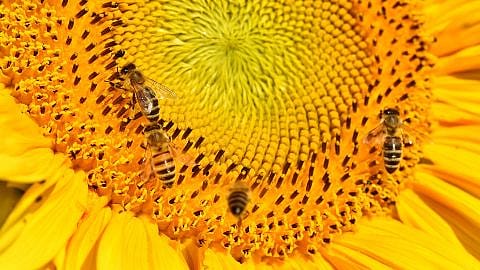How Do I Know if My Cosmetics Are Truly “Natural”?
Natural cosmetics is not a regulated term. Given the increasingly confusing number of products available, consumers can recognise genuine natural cosmetics more quickly by their seals.
Cosmos
Cosmos is an association of European natural cosmetics labels. The founding members are the Federal Association of German Industrial and Commercial Enterprises BDIH (Germany, see logo for example), the Soil Association (Great Britain), Ecocert and Cosmebio (France) and ICEA (Italy). There is a difference between the labels COSMOS Natural and COSMOS Organic. Additional criteria include compliance with “green chemistry” standards, a ban on the use of nanoparticles and certain packaging requirements. Testing is carried out by independent external certification bodies.
Demeter natural cosmetics
Cosmetic products bearing this seal always contain at least 90 percent Demeter certified raw ingredients. For natural cosmetics it is also possible to indicate the Demeter ingredients independently of the amounts listed in the ingredients list. The quality of each individual ingredient of agricultural origin must be indicated on the product. All products must be produced in compliance with standards pertaining to processing, additives and other auxiliary ingredients. Testing is carried out by independent external certification bodies.
NATRUE
is an international non-profit organisation that focuses on natural and organic cosmetics. In order to be NATRUE-certified, a product may contain only three categories of raw materials: natural substances, derived natural raw materials (modified natural substances) and nature-identical raw materials. There are three levels of certification: Natural Cosmetics, Natural Cosmetics with organic portion, and Organic Cosmetics. All NATRUE-certified products intentionally avoid the use of synthetic fragrances, silicones, paraffins, microplastics, mineral oil and synthetic fats. To ensure this, inspections are carried out by independent external certification bodies.
USDA Organic
In the USA, products identified as “100 percent organic”, with the exception of water and salt, must only contain organically produced ingredients. “Organic” products, with the exception of water and salt, must contain at least 95 percent organic ingredients. This seal is issued by the United States Department of Agriculture.
ISO
The ISO standard for natural and organic cosmetics sets definitions for different classes of ingredients and provides examples of how the proportion of natural and organic ingredients is calculated. There are no restrictions or limits regarding the selection and quantity of raw materials used; petrochemical (mineral oil-based) and genetically modified plants may also be used. Water counts as a natural substance. A minimum proportion of natural ingredients or organic raw materials is not prescribed.






